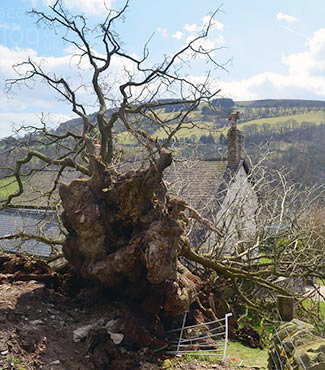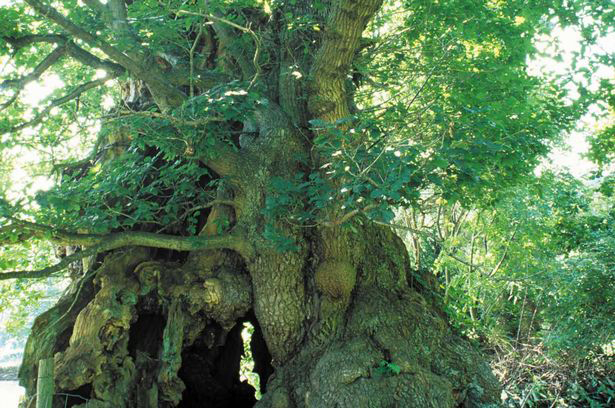The following is from Earthweek: A Diary of the Planet, which is featured on our web site:
A fierce storm on the night of April 17-18 blew down an ancient oak that had shaded the Ceiriog Valley in northern Wales since the year 802. The Pontfadog oak is said to have served as the rallying point for Welsh prince Owain Gwynedd’s army, which defeated England’s King Henry II in 1157. The tree was spared eight years later when Henry had his men cut down the Ceiriog woods.
“Are we looking after our ancient trees properly?” asked Rory Francis of the Woodland Trust, a British charity that works to protect trees and forests. He estimated it would have cost about $9,000 for measures to protect the tree and help it last longer. Its massive trunk, with a girth of 42 feet, had been largely hollowed out by decay.
Dianne Coakley-Williams, whose husband Huw’s family owned the oak and the land around it for generations, told the BBC she was awakened by an “almighty crash and a bang” as the oak fell near their house in the middle of the night. It hasn’t been decided what to do with the wood from the 1,200-year-old tree, but it could be used to make benches and even a monument for the village to put on display.
Editor’s note: According to an article in The Observer (John Vidal, April 27 2013), the Pontfadog oak was the oldest tree in Wales, the third largest in Britain, and one of the oldest in Europe. No one knew quite how old it was because it had lost its heartwood, but Michael Lear, a tree expert with the National Trust, visited Pontfadog in 1996 and wrote to Josie Williams: “Using Forestry Commission techniques, the youngest it can be is 1,181 years, the oldest 1,628 years. I cannot find a record of an oak tree of any of the 500 species internationally which has a greater girth anywhere in the world”…Almost all Britain’s ancient trees are just as loved as the Pontfadog oak by their communities and most are very vulnerable, says the Ancient Tree Forum. According to its database, the UK has 80% of all northern Europe’s ancient trees, with 5,365 in England, 581 in Wales and 646 in Scotland. Many are 500 years old or more.”



